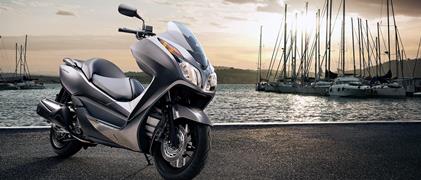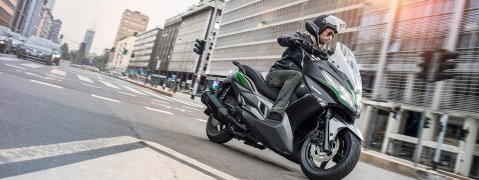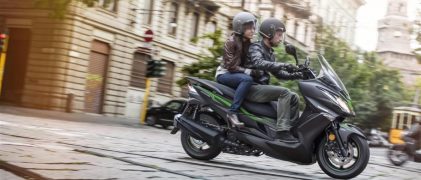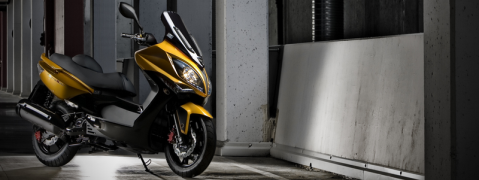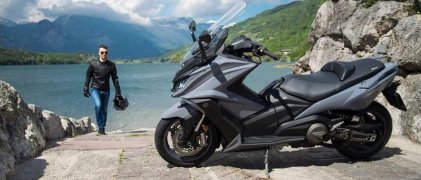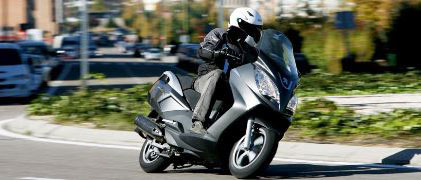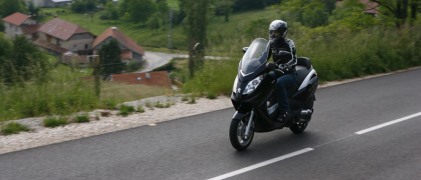 Kawasaki J300 - Owner's Manual > Safe Riding Techniques
Kawasaki J300 - Owner's Manual > Safe Riding Techniques
Keep Hands on Handlebars
When riding always keep both hands on the handlebars and both feet on the foot rest. Removing your hands from the handlebars or feet from the foot rest while riding can be hazardous. If you remove even one hand or foot, you reduce your ability to control the motorcycle.
Look Over Your Shoulder
Before changing lanes, look over your shoulder to make sure the way is clear. Do not rely solely on the rear view mirror; you may misjudge a vehicle's distance and speed, or you may not see it at all.
Accelerate and Brake Smoothly
In general your actions should be smooth as sudden acceleration, braking or turning may cause loss of control, especially when riding in wet conditions or on loose road surfaces, when the ability to maneuver will be reduced.
Use Both Front and Rear Brakes
When applying the brakes, use both the front and rear brakes. Applying only one brake for sudden braking may cause the motorcycle to skid and lose control.
Use Engine Brake
When going down long slopes, help control vehicle speed by closing the throttle so that the engine can act as an auxiliary brake. Use the front and rear brakes for primary braking.
Riding in Wet Conditions
Rely more on the throttle to control vehicle speed and less on the front and rear brakes. The throttle should also be used judiciously to avoid skidding the rear wheel from too rapid acceleration or deceleration.
Braking performance is also reduced in wet conditions. Carefully ride at a slow speed and apply the brakes several times to help dry and restores them to normal operating performance.
Ride Prudently
Riding at the proper speed and avoiding unnecessarily fast acceleration are important not only for safety and low fuel consumption but also for long vehicle life and quieter operation.
Riding on Rough Roads
Exercise caution, slow down for better stability.
Avoid Unnecessary Weaving
Unnecessary weaving jeopardizes the safety of both the rider and other motorists.
Additional Considerations for High Speed Operation
WARNING
Handling characteristics of a motorcycle at high speeds may vary from those you are familiar with at legal highway speeds. Do not attempt high speed operation unless you have received sufficient training and have the required skills.
Do not operate at high speeds on public roads.
Brakes
The importance of the brakes, especially during high speed operation, cannot be overemphasized. Check to see that they are correctly adjusted and functioning properly.
Steering
Looseness in the steering can cause loss of control. Check to see that the handlebars turns freely but has no play.
Tires
High speed operation is hard on tires, and good tires are crucial for safe riding. Examine their overall condition, inflate them to the proper pressure, and check the wheel balance.
Fuel
Have sufficient fuel for the high fuel consumption during high speed operation.
Engine Oil
To avoid engine seizure and resulting loss of control, make sure that the oil level is at the upper level line.
Coolant
To avoid overheating, check that the coolant level is at the upper level line.
Electrical Equipment
Make sure that the headlight, tail/- brake light, turn signals, horn, etc., all work properly.
Miscellaneous
Make sure that all nuts and bolts are tight and that all safety related parts are in good condition.
See also:
 Kawasaki J300 - Owner's Manual > Safe Operation
Kawasaki J300 - Owner's Manual > Safe Operation
The following should be carefully observed for safe and effective vehicle operation. Carbon Monoxide Hazard DANGER Exhaust gas contains carbon monoxide, a colorless, odorless poisonous gas. Inhaling carbon monoxide can cause serious brain injury or death. DO NOT run the engine in enclosed areas. Operate only in a well-ventilated area.

